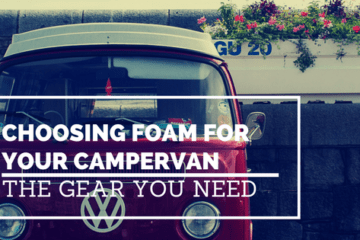What Foam to Use for Upholstery?
Foam can seem to be a very vague word. It is one of the most versatile materials ever made and can take many widely-used forms – even for upholstery foam.
The foam found in your upholstery, sofa and mattress will be a polyurethane “open cell” foam. Polyurethane foam has a consistent cell structure across the cushion, unlike fibre filling. It’s spongey, durable, flexible, and lightweight making it easy to fabricate.
In the UK, open cell foam raw material is manufactured by Vitafoam and Carpenter. It is made similarly to bread and is sold as huge blocks measuring 2m x 1.2m x 2.4m up to 250kg in weight! The foam arrives at converters like Foamrite and our parent company, Rubbarite, before being split down to a specified thickness and then cut to size.
See our PU foam splitter in action below:
Cell Structure
Open cell upholstery foam has a cell structure that allows air to escape when compressed, and for air to return when the compression is removed. This flow of air is the foam taking the pressure away from your body. This structure also allows water to be taken in – just like a sponge – so it is advised to use PU foam indoors only unless suitably covered. Open cell foam can be made in a wide range of densities, firmness grades, and additives for specialist purposes.
Density and Firmness
When choosing upholstery foam or campervan foam, the key features to look for are density and thickness. Density is the kilograms of foam per m³ of material – which indicates the foam’s resilience and support. Firmness is the force required to indent the foam – which indicates the surface feel.
Many confuse density with the firmness of the material. Density is more closely aligned with the quality and longevity of the foam, whilst firmness is the physical touch. The two features are independent of each other, although higher densities of foams tend to feel firmer.
When looking for upholstery foams, a useful guide is for the density of foam to be between 24kg/m³ and 40kg/m³ and firmness between 130N and 200N.
Memory foam grade foams, however, will have a greater density.
Fire Standards
The UK fire standards have set standards for furniture and furnishing. This ensures your foam is suitable for indoor use. Many cheaper, imported foams will not meet these fire standards and are therefore unsafe. All upholstery foam listed on Foamrite meets these set standards.
Upholstery Foam for Replacement Sofa Cushions
When choosing upholstery foam, you will require firmer foams for thinner cushions under 4”/100mm. As the space for cushioning is minimal, the firmer foam will offer greater support and shape retention. For cushions over 4”/100mm (particularly bolster cushions), a medium or soft firmness can be better served.
Foamrite supplies four grades of upholstery. These are named based on their firmness – soft, medium, firm and memory foam (as a topper). We do this to simplify the ordering process by removing often confusing and/or misleading product references. All foams listed on Foamrite offer suitable densities for use at home. Ultimately, the choice of foam is down to personal preference.
We offer a straightforward, three-stage ordering process for foam cut to size with free, instant quotes.


0 Comments